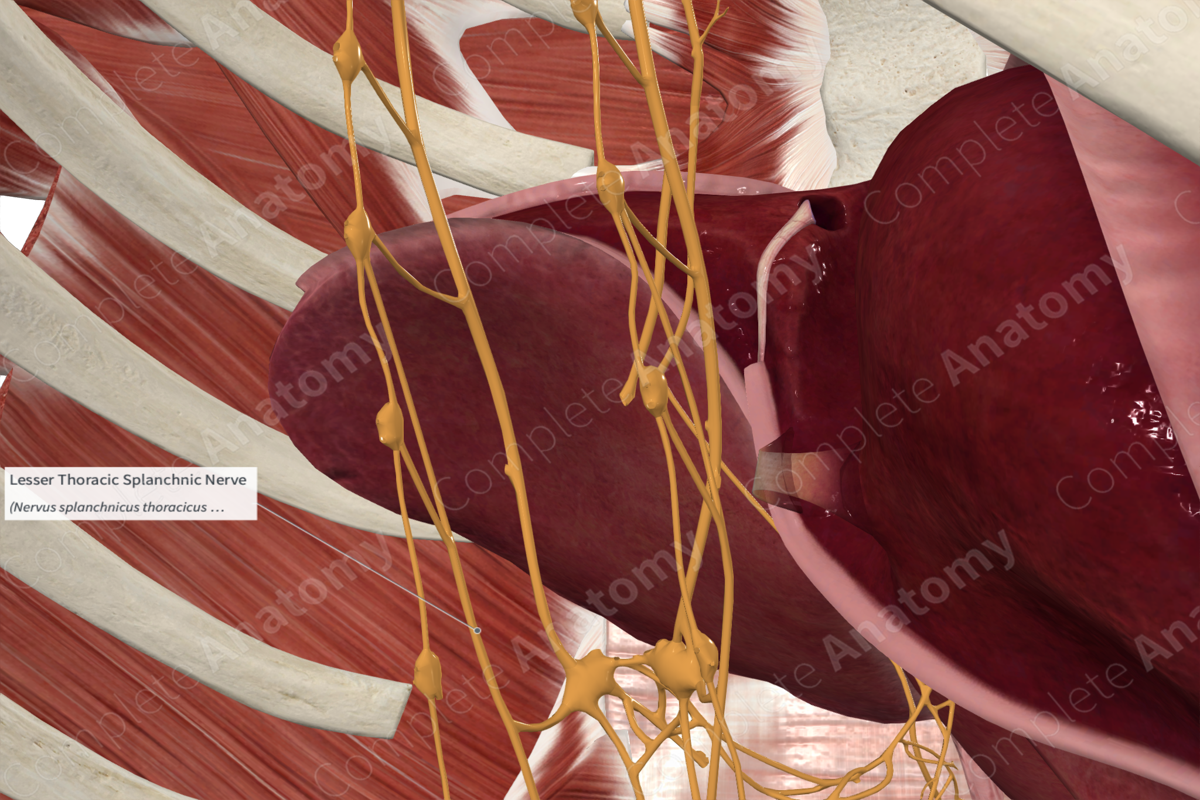
Quick Facts
Origin: Ninth to tenth thoracic nerves (T9—T10).
Course: Anteriorly and inferiorly from the thoracic sympathetic chain, piercing the diaphragm and running down through the abdomen to the superior mesenteric and aorticorenal ganglia.
Branches: No branches.
Supply: Sympathetic innervation to the vessels and viscera of the midgut, kidneys, adrenal glands, and upper ureter.
Related parts of the anatomy
Origin
The lesser splanchnic nerve emerges from the sympathetic trunk ganglia associated with the ninth and tenth thoracic nerve level.
Course
The lesser splanchnic nerve runs anteriorly towards the anterolateral surface of the vertebral bodies, and inferiorly towards the abdomen. It pierces the diaphragm and runs through the abdomen to the superior mesenteric and aorticorenal ganglia.
Branches
There are no branches of the lesser thoracic splanchnic nerve.
Supplied Structures & Function
The sympathetic fibers of the lesser splanchnic nerve synapse in either the superior mesenteric or aorticorenal ganglia. The postganglionic fibers from the superior mesenteric ganglion innervate vessels and viscera of the midgut. The postganglionic fibers from the aorticorenal ganglion innervate the kidneys, adrenal glands, and upper ureters.
Visceral sensory fibers from these tissues return to the central nervous system via the lesser splanchnic nerve.
Learn more about this topic from other Elsevier products
Splanchnic Nerve

The lumbar splanchnic nerves are extensions of the sympathetic trunk, originating from the L1-L3 nerve roots, and provide sympathetic innervation to the rectum and pelvic organs.



